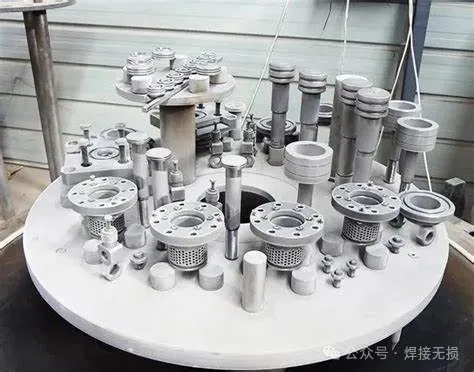Hot Keywords:
- All
- Product Name
- Product Keyword
- Product Model
- Product Summary
- Product Description
- Multi Field Search
Views: 2 Author: Site Editor Publish Time: 2024-10-15 Origin: Site
The process of placing steel parts in a chemical medium containing one or several infiltrating elements, and diffusing the infiltrating elements from the surface to the interior through heating, insulation, and cooling is called chemical heat treatment. The purpose of chemical heat treatment is to improve the hardness, wear resistance, heat resistance, corrosion resistance, and fatigue strength of metal surfaces through the chemical composition and structure of steel parts.
After infiltrating different elements into the metal surface, different properties can be obtained. Therefore, chemical heat treatment of metals is often named after the infiltrated elements, such as carburizing, nitriding, carbonitriding, boronizing, aluminum infiltration, chromium infiltration, etc.
(1) Carburizing refers to a heat treatment process in which steel parts are heated in a carburizing medium, generally at 900 ℃~950 ℃, and kept warm to allow carbon atoms to penetrate their surface, increasing the surface carbon content and forming a certain carbon concentration gradient. It is the most widely used chemical heat treatment method in the mechanical manufacturing industry. According to the different carburizing agents used, carburizing methods can be divided into solid carburizing method, liquid carburizing method, and gas carburizing method.
The steel used for carburizing is mostly low-carbon steel or low-carbon alloy steel with a carbon mass fraction of 0.15% to 0.30%. Carbonization mainly uses parts with high surface hardness requirements and sufficient strength and toughness in the core, such as gears, piston pins, etc. To achieve the desired performance, the workpiece usually needs to undergo quenching and low-temperature tempering treatment after carburizing.
(2) Nitriding is a chemical heat treatment process that allows nitrogen atoms to penetrate the surface of a workpiece in a certain medium at a certain temperature, increasing the concentration of surface nitrogen. Common methods include liquid nitriding, gas nitriding, and ion nitriding. Traditional gas nitriding involves placing the workpiece in a sealed container, introducing flowing ammonia gas and heating it. After a long period of insulation, the ammonia gas decomposes to produce ammonia atoms, which continuously adsorb, diffuse, and infiltrate the surface of the workpiece. The nitriding temperature is very low, usually 500 ℃~580 ℃, and there is no need for quenching after nitriding, so the deformation of the workpiece is very small. It is commonly used in high-speed tool steel gears, grinder spindles, and those that require precise dimensions, corrosion resistance, and wear resistance. However, the process cycle is relatively long, and some steels (such as lead containing copper) have higher surface brittleness after nitriding.
(3) Carbon nitrogen co infiltration is a chemical heat treatment process that simultaneously infiltrates carbon and nitrogen atoms into the surface layer of steel to improve the hardness and wear resistance of the metal surface layer. The temperature range for carbon nitrogen co infiltration treatment is wide, and co infiltration can be carried out between 550 ℃ and 950 ℃. In daily life, carbon nitrogen co diffusion is often divided into three situations according to different temperatures, namely high-temperature carbon nitrogen co diffusion (900 ℃~950 ℃), medium temperature carbon nitrogen co diffusion (800 ℃~870 ℃), and low-temperature carbon nitrogen co diffusion (500 ℃~600 ℃). The carbon and nitrogen concentrations in the co infiltration layer vary depending on the co infiltration temperature. At high temperatures, carburizing is the main process, while nitrogen infiltration is minimal; At low temperatures, nitrogen infiltration is predominant, while carbon infiltration is minimal, commonly known as soft nitriding. Only under moderate temperature conditions can the infiltration of carbon and nitrogen be appropriate, and the application is also the most extensive. Therefore, carbonitriding usually refers to medium temperature carbonitriding. Compared with single carburizing, carbon nitrogen co carburizing has a faster speed, shorter production cycle, less tendency for workpiece deformation and cracking, and can achieve higher hardness, wear resistance, fatigue strength, and anti meshing ability of the workpiece.
